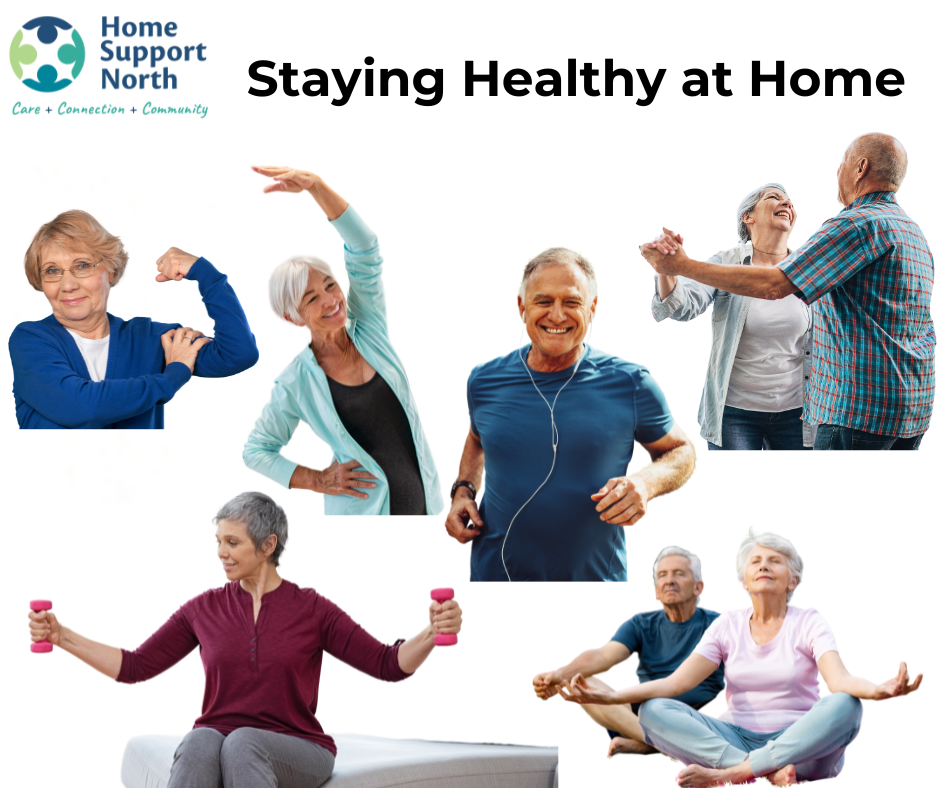Habits for Seniors Living Independently at Home
Aging in place offers seniors the invaluable opportunity to remain independent and comfortable within the familiar confines of their own homes. However, maintaining a healthy lifestyle is crucial for maximizing quality of life and ensuring a vibrant later life. This blog post will delve deeper into key aspects of healthy aging at home, providing more detailed information on exercise, nutrition, and mental well-being, with supporting research.
1. Prioritizing Physical Activity: A Foundation for Health
Regular exercise is not merely a recommendation; it’s a cornerstone of healthy aging. Research consistently demonstrates its profound impact on various aspects of health and well-being:
- Maintaining Muscle Mass and Bone Density: A study published in the Journal of Applied Physiology found that resistance training effectively combats age-related muscle loss (sarcopenia) and improves bone mineral density, reducing the risk of fractures.
- Source: Journal of Applied Physiology (2010)
- Enhancing Balance and Coordination: A meta-analysis published in the Journal of the American Geriatrics Society revealed that tai chi and other balance-training exercises significantly reduce the risk of falls in older adults.
- Source: Journal of the American Geriatrics Society (2011)
- Boosting Mood and Cognitive Function: Research published in the British Journal of Sports Medicine has shown that regular physical activity can improve mood, reduce symptoms of depression and anxiety, and enhance cognitive function in older adults.
- Source: British Journal of Sports Medicine (2018)
Tailoring Exercise to Individual Needs:
- Consulting with a Healthcare Professional: Before starting any new exercise regimen, it’s essential to consult with a doctor or physical therapist. They can assess your individual needs and recommend appropriate exercises based on your health condition and fitness level.
- Finding Activities You Enjoy: The key to long-term exercise success is finding activities that you genuinely enjoy. Whether it’s dancing, swimming, gardening, or walking your dog, choose activities that you look forward to and are likely to stick with.
- Incorporating Variety: To prevent boredom and maximize benefits, incorporate a variety of activities into your exercise routine. This could include a combination of cardio, strength training, flexibility exercises, and balance training.
- Making it Social: Joining a fitness class, walking group, or sports team can provide social interaction and motivation, making exercise more enjoyable.
2. Nourishing the Body: Fueling Optimal Health
A balanced and nutritious diet provides the essential building blocks for a healthy body and mind. As we age, our nutritional needs may change, and it’s important to focus on:
- Prioritizing Nutrient-Dense Foods: Emphasize whole, unprocessed foods such as fruits, vegetables, whole grains, lean protein, and healthy fats. These foods provide a wide range of vitamins, minerals, and antioxidants that support overall health.
- Hydration: Dehydration is a common problem among older adults, and it can lead to fatigue, dizziness, and confusion. Make sure to drink plenty of water throughout the day.
- Calcium and Vitamin D: These nutrients are crucial for maintaining bone health. Good sources of calcium include dairy products, leafy green vegetables, and fortified foods. Vitamin D is produced by the body when exposed to sunlight and is also found in fatty fish and fortified foods.
- Fiber: Adequate fiber intake is essential for digestive health and can help regulate blood sugar levels. Good sources of fiber include fruits, vegetables, whole grains, and legumes.
- Limiting Processed Foods: Processed foods are often high in unhealthy fats, added sugars, and sodium, which can contribute to various health problems. Minimize your intake of processed foods, sugary drinks, and excessive amounts of red meat.
Practical Tips for Healthy Eating:
- Meal Planning: Planning your meals in advance can help ensure that you have healthy options readily available and prevent impulsive unhealthy choices.
- Cooking at Home: Cooking at home allows you to control the ingredients and portion sizes, making it easier to eat healthy.
- Involving Others: If possible, involve family or friends in meal planning and preparation. This can make the process more enjoyable and provide social interaction.
3. Nurturing Mental Well-being: Cultivating a Positive Mindset
Mental well-being is just as important as physical health, especially as we age. Engaging in activities that nourish your mind and spirit can enhance your overall quality of life.
- Social Connection: Maintaining strong social connections is vital for mental and emotional well-being. Spend time with loved ones, participate in community activities, join clubs or groups, and volunteer. Research consistently shows that social isolation and loneliness can have detrimental effects on mental and physical health.
- Mindfulness and Relaxation Techniques: Practices like meditation, deep breathing exercises, and yoga can help reduce stress, improve sleep, and enhance overall well-being. Studies have demonstrated the effectiveness of mindfulness-based interventions in reducing anxiety, depression, and improving cognitive function in older adults.
- Cognitive Stimulation: Engage in mentally stimulating activities such as reading, puzzles, learning a new language, playing board games, or taking online courses. Cognitive stimulation can help maintain cognitive function and reduce the risk of cognitive decline.
- Prioritizing Sleep: Aim for 7-9 hours of quality sleep per night. A good night’s sleep is essential for physical and mental restoration.
Additional Resources for Mental Well-being:
- Support Groups: Connecting with others who are experiencing similar challenges can provide valuable support and a sense of community.
- Therapy: If you are struggling with mental health issues such as depression, anxiety, or grief, consider seeking professional counseling or therapy.
- Online Resources: Utilize online resources such as mindfulness apps, mental health websites, and support forums.
Creating a Supportive Home Environment
Your home environment can significantly impact your overall well-being. Taking steps to create a safe and supportive home can enhance your independence and quality of life.
- Home Modifications: Make necessary modifications to your home to improve safety and accessibility. This could include installing grab bars in the bathroom, improving lighting, removing tripping hazards, and using assistive devices as needed.
- Technology: Utilize technology to stay connected with loved ones, access healthcare services, and manage daily tasks. Telehealth appointments, video calls, and online grocery shopping can enhance convenience and independence.
- Home Care Assistance: Consider home care services for assistance with daily living activities, such as personal care, meal preparation, light housekeeping, and medication reminders.
Home Support North plays a vital role in empowering seniors to live independently and comfortably within their own homes. They offer a wide range of personalized services, including assistance with daily living activities such as bathing, dressing, and meal preparation. Their compassionate caregivers can also provide companionship, light housekeeping, and respite care for family members. By providing tailored support that meets individual needs, Home Support North helps seniors maintain their dignity, independence, and quality of life while aging in place.
Disclaimer: This information is for general knowledge and informational purposes only and does not constitute medical advice. Consult with a healthcare professional for personalized guidance on your specific health needs.
By prioritizing physical activity, nourishing your body, nurturing your mental well-being, and creating a supportive home environment, seniors can age gracefully and maintain a high quality of life while living independently at home.
This enhanced version includes supporting research for key statements, making the information more credible and informative for readers.


